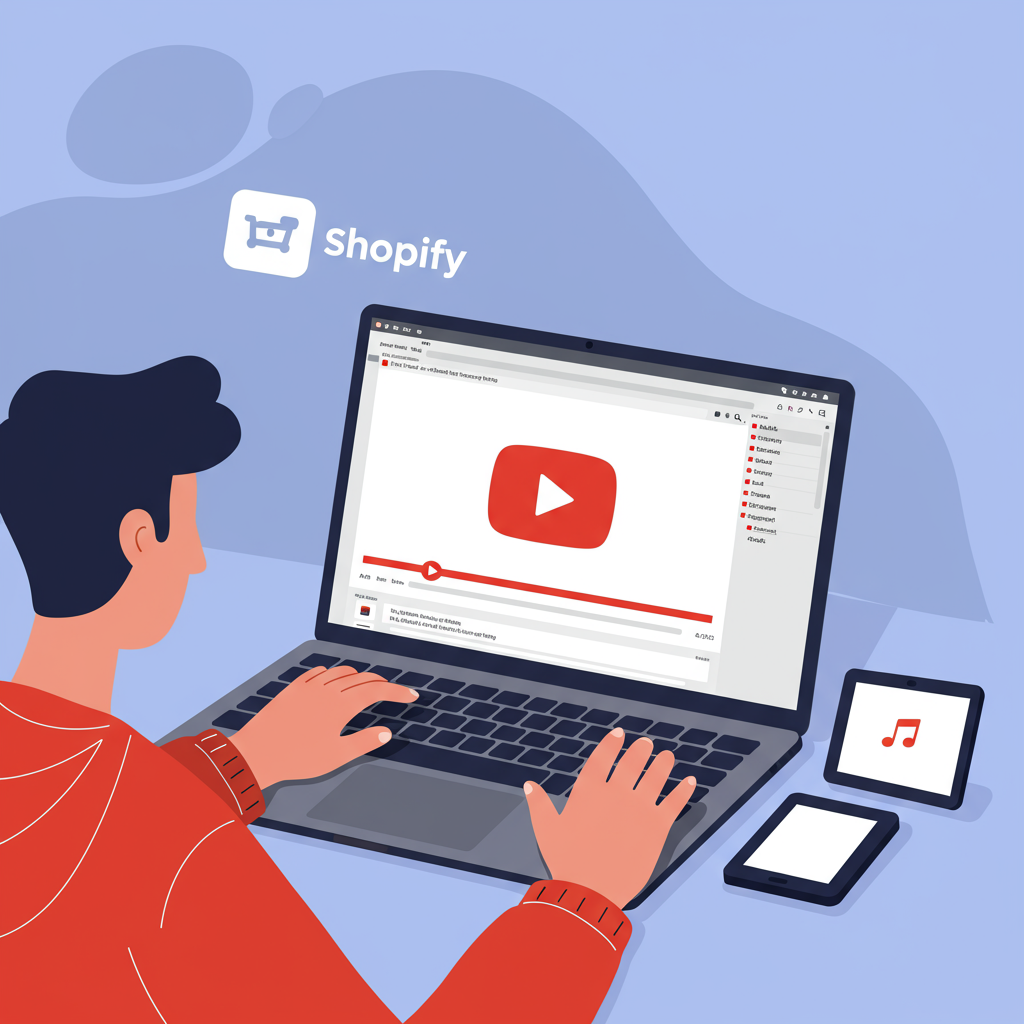Discover how I’ve leveraged the power of YouTube creators to boost sales and build brand awareness for my e-commerce business.
Hey there, fellow Shopify store owner! I’m here to share some insights from my own journey in e-commerce, specifically focusing on a strategy that has truly transformed my business: collaborating with YouTube influencers.
When I first started my Shopify store, I tried all the usual marketing channels – Facebook ads, Instagram posts, SEO. They worked, but I felt like I was missing a piece of the puzzle, something that could create a deeper connection with potential customers.
That’s when I turned my attention to YouTube. It’s not just a video platform; it’s a massive community where people go for entertainment, education, and, crucially, product recommendations.
Think about it: viewers on YouTube actively seek out content. They trust the creators they follow, often more than traditional advertisements. This trust is gold for any brand.
My goal was to tap into this trust. I realized that if a creator my target audience admired genuinely recommended my products, it would carry immense weight.
The first step, and arguably the most critical, was finding the *right* influencers. It’s not about follower count alone; it’s about relevance and engagement.
I started by identifying my target audience. Who are they? What are their interests? What kind of content do they consume on YouTube?
Then, I searched for channels that aligned with my product niche. If I sell eco-friendly home goods, I’d look for channels focused on sustainable living, minimalist design, or home organization.
I paid close attention to their audience demographics. Do their viewers match my ideal customer profile? Most YouTube channels provide public analytics or are willing to share them upon request.
Engagement rate was another key metric. Are their viewers commenting, liking, and sharing? A smaller channel with high engagement can often be more effective than a large channel with passive viewers.
Authenticity is paramount. I looked for creators whose content felt genuine and whose personality resonated with my brand values. A forced or inauthentic promotion can do more harm than good.
Once I had a list of potential collaborators, I considered the types of collaborations that would work best for my products. There are several effective formats.
Product reviews are a classic. The influencer receives your product, uses it, and shares their honest opinion. This builds trust and provides valuable social proof.
Sponsored videos allow for more creative control. You might sponsor an entire video where your product is naturally integrated into their regular content, perhaps as part of a “haul” or a “favorites” video.
Unboxing videos are incredibly popular, especially for visually appealing products. The excitement of opening a package can be contagious and showcase your product’s presentation.
Tutorials or “how-to” videos are fantastic if your product requires demonstration or solves a specific problem. This shows the product in action and highlights its benefits.
Giveaways are excellent for generating buzz and growing your audience. You provide products for the influencer to give away, often in exchange for viewers subscribing or following your social media.
Affiliate links are a performance-based option. The influencer earns a commission on sales generated through their unique link. This can be a lower-risk entry point for collaborations.
When it came time to reach out, I made sure my pitch was professional, concise, and personalized. I didn’t use generic templates.
I clearly explained who I was, what my Shopify store offered, and why I thought their channel would be a great fit. I highlighted the value proposition for *them* and their audience.
Negotiation is part of the process. Payment models vary: some influencers prefer a flat fee, others a commission, and some might accept free product in exchange for a review, especially if they’re smaller or genuinely love your brand.
Always get a clear agreement in writing, even if it’s just an email outlining the deliverables, timeline, and compensation. This protects both parties.
Once the campaign was agreed upon, I provided the influencer with everything they needed: high-quality product images, key talking points (without being overly prescriptive), discount codes for their audience, and tracking links.
Tracking is crucial for measuring success. I used unique discount codes for each influencer and UTM parameters on my links to see exactly how much traffic and sales each collaboration generated in my Shopify analytics.
Beyond direct sales, I also looked at brand awareness metrics: increased website traffic, social media mentions, and subscriber growth on my own channels.
Building long-term relationships with influencers has been incredibly beneficial. A recurring collaboration with a trusted creator can yield far better results than one-off campaigns.
I’ve learned to avoid a few common pitfalls. Don’t micromanage the creator; they know their audience best. Don’t expect overnight viral success; consistency and patience are key.
Also, be prepared for honest feedback. Not every review will be glowing, and that’s okay. It provides valuable insights and maintains authenticity.
Integrating these campaigns with my Shopify store was straightforward. Creating unique discount codes is simple, and tracking sales through specific links is built into the platform’s analytics.
For more advanced tracking, I sometimes use third-party apps that integrate with Shopify to manage affiliate programs or track influencer-specific conversions more deeply.
Ultimately, YouTube influencer marketing has proven to be a powerful, authentic way to connect with my target audience and drive significant growth for my Shopify store. It’s an investment that has paid off handsomely.
What do you think about this article? Have you tried influencer marketing for your Shopify store? I’d love to hear your experiences and insights.






